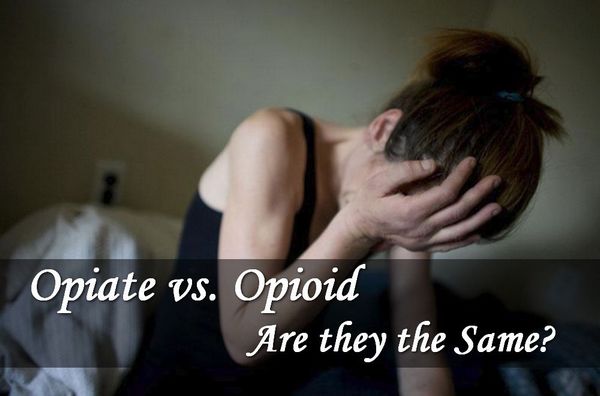Many words tend to sound the same or look similar to one another in meaning, so it’s easy to get confused or use them interchangeably. Medical terms are even more difficult to understand and differentiate, especially if you don’t have a background in the field.
One such mistake is distinguishing between opiates and opioids – two terms that look similar and have similar effects on the body. They confuse a lot of people, as some will refer to them as separate drugs while others use them interchangeably. But lately, there has been a tendency for people especially politicians and journalists, to refer to them as opioids as an umbrella term.
However, are they really different from each other?
The similarities between the two
Humans don’t enjoy pain – this is why many people seek medical help when they experience it and get treatment. Sometimes, over-the-counter medications don’t give you the relief you’re looking for, and your doctor may prescribe you stronger painkillers. However, when you abuse drugsit can lead to addiction, as well as worse consequences later in life such as opioid withdrawal symptoms and death.
Both opiates and opioids are similar on many levels, although they differ slightly. Both are derivatives of the opium produced by the poppy plant. Did you know that the seeds on your hamburger bun are poppy seeds, although they don’t have the same effect as opium?
Both have medical uses, as they act as pain relievers. That means that doctors may prescribe it to suppress diarrhea, relieve pain, suppress coughs, anaesthetize, or even treat opiate disorders. This is due to its effect on the brain, as it blocks opioid receptors, resulting in changes in how your brain perceives and processes pain – it provides relief for the user, especially in extreme pain.
Disruption of opioid receptors also has the side effect of feeling a ‘high’, and the pleasure from this experience can lead a person to consume larger amounts – people can also use them illegally, especially in cases of addiction.
So how does it work?
Opioids and opiates change the way the brain perceives pain. This doesn’t mean that the pain is over, but it reduces the feeling you had when it hurt.

They do so by attaching themselves to molecules inside the pain nerve cells of the nervous system, the opioid receptors. When attached, the cells send a signal to the brain, which does not accurately describe the severity of the pain the body is experiencing. Therefore, individuals who have taken the drug feel less pain intensity.
Drugs will also change the way the brain experiences pleasure, as the individual experiences a feeling of euphoria, then intense relaxation or sleepiness follows that feeling.
Difference between opiates and opioids
The only difference comes through the manufacture of the product.
Opiates
The general meaning of the term in pharmacology means a substance from opium. They are mostly alkaloid compounds that you find in certain opium poppy plants Papaver somniferum. They occur naturally, and include compounds such as morphine, thebaine, and codeine. Heroin is also included in a class of natural compounds in plants.
Opioids
While it is a more general term that refers to both synthetic and natural substances that bind to brain opioid receptors, it is more a synthetic chemical compound, mostly from manufacture or laboratory synthesis. Manufacturing styles vary, as some are partial derivatives of naturally occurring compounds in the poppy plant. These include hydromorphones such as Dilaudid, hydrocodone such as Vicodin, or oxycodone such as Percocet and Oxycontin.
Others undergo complete manufacturing in a laboratory, without the use of natural compounds. There are more than 500 opioid molecules that have been made by the pharmaceutical industry, some only for medical use (such as anesthesia during surgery), while some are not.
Certain opioids that are widespread in the US include Hydrocodone such as Vicodin, Dextromethorphan – you can get them in the US even without a prescription, such as Vicks, NyQuil, TheraFlu and Robitussin; Loperamide such as Imodium, Dextropropoxyphene such as Darvon and Darvocet-N, Carfentanyl such as Wildnil (for animal use), Oxycodone such as Percocet, Oxyxontin; Oxymorphone like Opana, Meperidine like Demerol, Methadone like Dolophine, and Fentanyl like Sublimaz, Ultiva and Duragesic patches.
Why is this difference not important?
In the end, this difference doesn’t really help, because of the effect of the two opiate withdrawal and opioid withdrawal are the same. Another problem is that opioids refer to both natural and synthetic drugs, opiates also refer to something similar. Scientifically, this lacks consistency and may not make sense to many people.

When studying the chemical structure of the four examples of opiates and opioids, it can get even more confusing. For example, morphine and heroin have very similar chemical structures to each other, but morphine is technically an opiate (derived from opium) whereas heroin is both an opiate and an opioid (also a by-product of morphine synthesis).
In addition, fentanyl does not have the same chemical structure as heroin and morphine, but is under the classification of opioids because it is synthetic. A chemist might study these chemicals and think they don’t need this classification. The general rule is that all opiates are opioids, but not all opioids are opiates.
Addicted
Pain relievers are for short-term use only, and if you take them as directed by your doctor, you are less likely to become addicted to them. However, as your body develops a high tolerance for the drug, you need more of it to relieve pain, thus developing an addiction – requiring an opiate detox.
Final thoughts
Opiates and opioids are largely indistinguishable from one another, as they are both derivatives of the same source – poppy seeds. It is important to remember that both pose a risk to your health when you take them in large doses.








